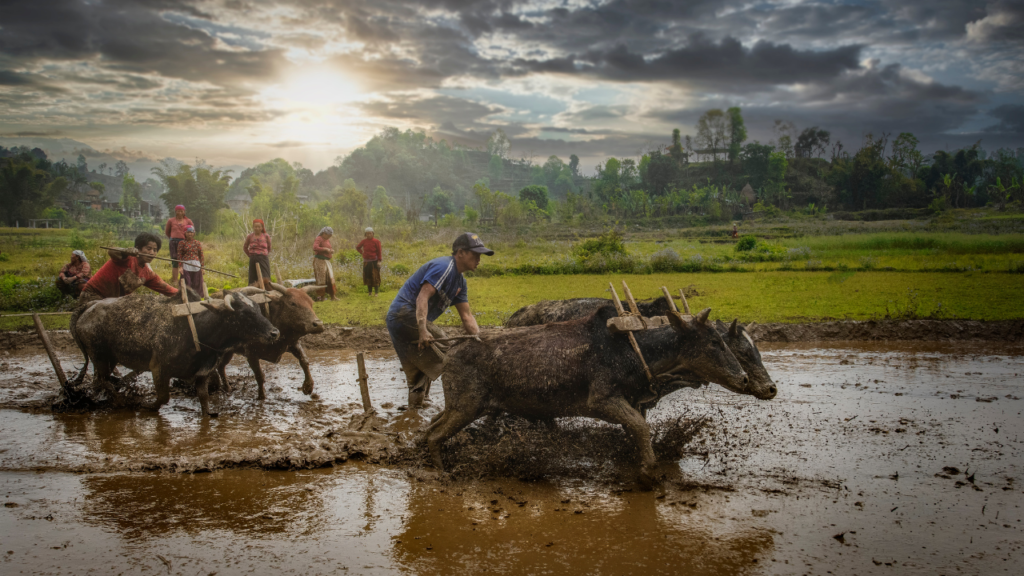Agriculture is the backbone of the Indian economy, and a majority of the population in states like Jharkhand still relies on farming for their livelihood. However, agriculture remains highly vulnerable to natural calamities, erratic weather conditions, floods, and droughts. These challenges often lead to crop failures and economic hardship for farmers. To protect the interests of farmers and ensure financial security during such distressing times, the Government of Jharkhand launched the Jharkhand Rajya Fasal Rahat Yojana a farmer-centric crop relief scheme.
Unlike traditional crop insurance models, the Jharkhand Rajya Fasal Rahat Yojana is a unique initiative aimed at providing direct financial assistance to farmers in case of crop loss due to natural disasters. This state-run relief program replaces the need for premium-based insurance policies with a more inclusive and affordable model that ensures even the poorest farmers get support during tough times.
This article explores the full scope of the scheme, how it works, eligibility criteria, application process, and the broader impact it is creating in rural Jharkhand. Whether you’re a farmer, a student of agricultural policy, or someone curious about rural welfare initiatives, this detailed analysis of Jharkhand Rajya Fasal Rahat Yojana will help you understand why this scheme is so vital for the farming community.
Understanding the Vision of the Scheme
Launched in 2021 by the Government of Jharkhand under the leadership of Chief Minister Hemant Soren, the Jharkhand Rajya Fasal Rahat Yojana (JRFRY) was designed to replace the Pradhan Mantri Fasal Bima Yojana (PMFBY) in the state. The government felt the central scheme wasn’t as effective in reaching all eligible farmers, particularly small and marginal landholders who could not afford premium costs or manage insurance documentation.
Therefore, the state decided to create a zero-premium, direct compensation model that operates more like a disaster relief fund rather than an insurance plan. The JRFRY aims to support farmers who suffer crop loss due to natural disasters, drought, heavy rainfall, hailstorms, floods, and other climate-related incidents.
Unlike commercial insurance plans, this scheme is non-contributory, meaning farmers don’t have to pay any fee or premium to be eligible. All the financial burden of compensation is borne by the Jharkhand government, making it an inclusive relief plan for even the most economically backward farming families.
Objectives of Jharkhand Rajya Fasal Rahat Yojana
The key objective of Jharkhand Rajya Fasal Rahat Yojana is to ensure that farmers facing crop loss due to unforeseen natural events are not pushed into poverty or debt traps. This financial safety net helps them recover, rebuild, and continue agricultural operations without falling prey to moneylenders or abandoning farming altogether.
The broader goals of the scheme include:
- Offering quick financial relief to eligible farmers post-crop failure.
- Enhancing trust and transparency between farmers and the government.
- Encouraging more farmers to report losses, knowing that compensation will be directly credited to their bank accounts.
- Promoting agricultural sustainability by protecting farmers from abandoning their profession.
- Building a state-level disaster management mechanism to handle agricultural risks more effectively.
By meeting these objectives, the scheme contributes to rural empowerment and strengthens the overall agricultural economy of Jharkhand.
Key Features of the Scheme
The Jharkhand Rajya Fasal Rahat Yojana stands out for its farmer-friendly approach. Below is a detailed table outlining the major features of the scheme:
| Feature | Details |
| Scheme Type | Crop Relief Scheme |
| Launched By | Government of Jharkhand |
| Year of Launch | 2021 |
| Target Beneficiaries | Small, marginal, and large farmers of Jharkhand |
| Coverage | Crop loss due to natural disasters like drought, flood, hailstorm, etc. |
| Compensation Model | Direct financial assistance; not an insurance scheme |
| Premium Requirement | Nil (Zero premium model) |
| Registration | Online via the JRFRY portal |
| Compensation Disbursement | Direct Benefit Transfer (DBT) to farmer’s bank account |
| Operational Authority | Department of Agriculture, Animal Husbandry, and Co-operative, Jharkhand |
This structure ensures that all farmers regardless of their financial capacity can receive timely support without bureaucratic delays or complex paperwork.
Eligibility Criteria for Farmers
To ensure fairness and inclusion, the scheme has specific eligibility norms. All farmers who wish to apply under the Jharkhand Rajya Fasal Rahat Yojana must fulfill the following conditions:
The applicant must be a resident of Jharkhand and actively involved in farming activities.
The land being cultivated must be located within the geographical boundaries of Jharkhand and must be legally owned or leased.
Crop loss should be caused by declared natural calamities, certified by district administration or local authorities.
Farmers must have registered themselves online on the official JRFRY portal and submitted necessary documents.
A valid Aadhaar-linked bank account is mandatory for receiving compensation.
These conditions are aimed at filtering genuine beneficiaries while ensuring that relief reaches the most vulnerable farming households promptly.
Registration Process and Application Procedure

To avail of benefits under this scheme, farmers must complete a one-time online registration. The process has been simplified to make it accessible even in rural regions. Here’s how a farmer can register:
- Visit the official portal of Jharkhand Rajya Fasal Rahat Yojana at official website.
- Click on “Farmer Registration” and enter personal details such as name, Aadhaar number, mobile number, village, district, and landholding details.
- Upload scanned copies of identity proof, land records, and recent passport-sized photograph.
- Submit the form and receive a registration confirmation via SMS.
- In the event of crop damage, revisit the portal, file a crop loss claim, and upload photographs and evidence.
Once the application is verified by local revenue officials and agriculture officers, the compensation amount is calculated and credited to the farmer’s account using the Direct Benefit Transfer (DBT) mechanism.
Implementation and Monitoring Mechanism
The execution of the Jharkhand Rajya Fasal Rahat Yojana is closely monitored by the Department of Agriculture with the support of the Disaster Management Authority. Field-level implementation is managed through a network of Panchayat-level agriculture officers, who assess crop damage and forward claims to the district-level offices.
Advanced technologies like satellite imaging, GPS tracking, and drone surveys are also being integrated to ensure accurate damage reporting and minimize fraudulent claims. The government has also set up a grievance redressal system where farmers can track the status of their applications and file complaints if compensation is delayed or denied.
This multi-layered monitoring system not only boosts the scheme’s transparency but also builds trust among farming communities who were earlier skeptical of government-led insurance programs.
Impact of Jharkhand Rajya Fasal Rahat Yojana
Within a short span of its launch, Jharkhand Rajya Fasal Rahat Yojana has emerged as a success story in farmer welfare policy. Thousands of farmers who suffered crop loss during unseasonal rains and droughts in the last two years have received compensation without having to pay any premium or interact with private insurance companies.
The scheme has helped:
- Improve financial resilience among small and marginal farmers
- Reduce farmer suicides by offering hope and stability during economic stress
- Enhance agricultural productivity by ensuring timely re-sowing through support funds
- Build a trustworthy rural governance model through digital and direct interventions
Most importantly, it shows that with the right intentions, state governments can build inclusive welfare mechanisms that work efficiently outside of the traditional insurance framework.
Conclusion
The Jharkhand Rajya Fasal Rahat Yojana is a remarkable example of how state-specific agricultural policies can be tailored to suit local realities. By removing premium burdens and focusing on direct relief, the scheme has provided timely financial support to thousands of distressed farmers, boosting their morale and ensuring that agriculture remains a viable livelihood.
As climate change continues to impact farming patterns across India, more such state-led models may need to be adopted. Jharkhand’s experiment with JRFRY could serve as a blueprint for other states looking to protect their farmers from unpredictable disasters and ensure long-term sustainability in agriculture.
For the farmers of Jharkhand, Jharkhand Rajya Fasal Rahat Yojana is more than just a scheme it is a promise of support, stability, and respect for their hard work and resilience.
Read Our More Blogs 🙂
Subhadra Yojana: Empowering Women Through Financial Independence



